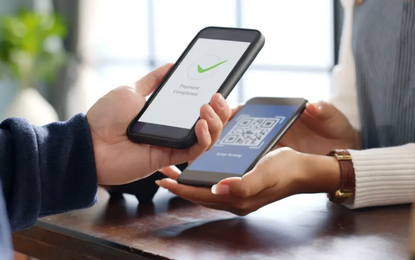

Gamification, UX writing and contactless functions are key to improving digital user experience – and therefore app usage - this year.
Digital wallets have become a key tool in payments globally. Their simplicity and user friendliness have driven their growth, thereby energizing competition in the market - which in turn has encouraged a rapid cycle of design and functionality improvements.
User experience (UX) can change make or break a person’s perception of an e-wallet. Digital teams must constantly review how clients interact with the platform, and look for ways to improve this contact.
Optimizing the UX architecture can help a wallet keep growing its user base, so it is essential to understand the trends that will enable this long-term expansion.
Although there is no consensus on the concept of gamification, the technology consulting firm Gartner presents a very simple and concise definition: "the use of game mechanics and experience design to digitally engage and motivate people to achieve their goals".
Gamification uses game-like elements in non-sporting areas, as a way to generate greater user participation.
When applied to the case of mobile wallets, gamification can be related to rewards or loyalty programs that provide significant advantages to users - but not necessarily trophies or digital decorations that do not generate any cumulative wealth for the customer.
Instead, gamification can be applied to tracking of expenses and investments, offering users personalized credits, or promising a higher savings rate if the number of deposits is increased.
In the long run, gamification in apps builds customer loyalty, while at the same time obtaining valuable data to help banks to understand clients better and offer them personalized products. Gamification also helps to bring credit products closer to groups that are usually excluded from financial systems, such as the self-employed, young people and the elderly.
One point to keep in mind before deploying a gamification strategy is that the financial environment is usually a sensitive and serious space for its users. That is, no one wants to feel that their savings are a "game".
Therefore, the innovation and development area must decide which UX elements will be gamified, without neglecting data protection and transaction speed.
Another User Experience trend for 2021 is UX Writing – the art of drafting the texts that appear in the wallet, such as buttons, functionalities, error messages, and information in general.
The practical goal of UX writing is to make the app's language easier, guiding the user in its navigation through an intuitive interface. Getting it right requires a deep knowledge of the client.
In financial services, industry terminology or jargon can be overwhelming or intimidating, which can pose a serious threat to wallet usability. UX Writing transforms heavy prose into a seamless, intuitive digital journey, helping users grasp meanings more easily and gain a sense of financial clarity.
As wallets become the main interface for consumer payment, we still often encounter high-friction processes, with multiple, complicated steps. Strong UX writing focused in this area - which can be integrated with the product design - will allow in-app processes to be less cumbersome and easier to navigate.
Remember that transparent wording will allow users to make better financial decisions, without the need to learn the terminology or -in the worst case- end up uninstalling the wallet.
Social distancing has made remote payment functions a necessity. Digital wallets can make this easy, using a smartphone’s camera to process payment through a QR Code.
The advantage of the Quick Response (QR) code is that it can be scanned from any flat surface such as paper, plastic or even from another screen.
QR is a contactless payment method that is user-friendly, as all you need is your cell phone at hand, meaning there is no need for physical cards or identification are required to make the transaction.
Best of all, this does not detract from the security of the feature, as all data is encrypted, and customers do not need to fill in any details other than the amount to pay. In some cases, the transaction may even be tokenized, meaning that the merchant does not store the customer’s information.
Join our online community and stay up to date with the latest news from the world of technology.